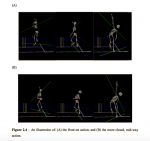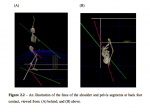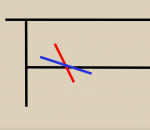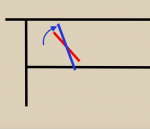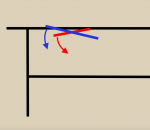Starfighter
Cricket Web: All-Time Legend
I'm going to make this thread to talk about one of the most vexing issues in pace bowling, that of the so called 'mixed' bowling action. This is probably the major cause of back stress fractures. Since the 1980s when researchers at the University of Western Australia such as Bruce Elliot first started exploring the issue research has fairly consistently found that the main factor in back injuries is excessive twisting and flexion during delivery, usually associated with a large amount of counter rotation.
Disclaimer: I'm not a coach, so take as many grains of salt as you need.
Now, we must define what counter-rotation is. This is the relative movement between the shoulders and hips that occurs during a bowling action. Hip and shoulder angles are usually defined with respect to the popping and bowling creases - closer to parallel is open and closer to perpendicular is closed. I won't use the specific numbers for angles used in the scientific publications, as they're a bit confusing and vary between papers. In this the important phases of a bowling action are the contacts of the back and front feet, the greatest extension during the delivery stride, and the delivery itself.
A bowler may land on the back foot with the hips or shoulders open, closed, or both, but basically anyone who can get the ball down the other end will always follow a sequence from closed during the greatest extension of the delivery stride to open at delivery. The hips and shoulders will both rotate the same way throughout the action.
The counter part comes from the most common type - where the shoulders rotate backwards relative to the hips, starting off more open and ending up more closed. The other way does happen - this is simply defined as a negative counter rotation, but this is much less common.
The reason why is that all really fast bowlers seperate their hips and shoulders during delivery, with the hips being more open. This is more marked in bowlers with conventional than slinging actions due to differences in the kinematics and muscles used, but it will pretty much always happen.
Now - what is a mixed action? This is where there is a significant separation between the hips and the shoulders at back foot contact, or alternatively (and leading on from this) an action with what could be considered a large counter rotation. The amount of separation or counter rotation used to define a mixed action varies, recent literature favours 30° or so, and a large amount of counter-rotation is somewhat preferred in definitions - some bowlers maintain separations without it.
This is not dependent on the how closed the hips or shoulders are at back foot contact. While only chest on (open) or side on (closed) used to be recognised, the division is really arbitrary and modern literature splits it into three, with mid-way being self explanatory (and probably the most common style these days).
Disclaimer: I'm not a coach, so take as many grains of salt as you need.
Now, we must define what counter-rotation is. This is the relative movement between the shoulders and hips that occurs during a bowling action. Hip and shoulder angles are usually defined with respect to the popping and bowling creases - closer to parallel is open and closer to perpendicular is closed. I won't use the specific numbers for angles used in the scientific publications, as they're a bit confusing and vary between papers. In this the important phases of a bowling action are the contacts of the back and front feet, the greatest extension during the delivery stride, and the delivery itself.
A bowler may land on the back foot with the hips or shoulders open, closed, or both, but basically anyone who can get the ball down the other end will always follow a sequence from closed during the greatest extension of the delivery stride to open at delivery. The hips and shoulders will both rotate the same way throughout the action.
The counter part comes from the most common type - where the shoulders rotate backwards relative to the hips, starting off more open and ending up more closed. The other way does happen - this is simply defined as a negative counter rotation, but this is much less common.
The reason why is that all really fast bowlers seperate their hips and shoulders during delivery, with the hips being more open. This is more marked in bowlers with conventional than slinging actions due to differences in the kinematics and muscles used, but it will pretty much always happen.
Now - what is a mixed action? This is where there is a significant separation between the hips and the shoulders at back foot contact, or alternatively (and leading on from this) an action with what could be considered a large counter rotation. The amount of separation or counter rotation used to define a mixed action varies, recent literature favours 30° or so, and a large amount of counter-rotation is somewhat preferred in definitions - some bowlers maintain separations without it.
This is not dependent on the how closed the hips or shoulders are at back foot contact. While only chest on (open) or side on (closed) used to be recognised, the division is really arbitrary and modern literature splits it into three, with mid-way being self explanatory (and probably the most common style these days).
Last edited:

